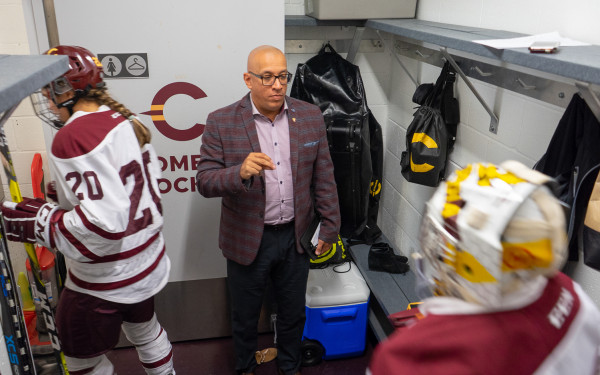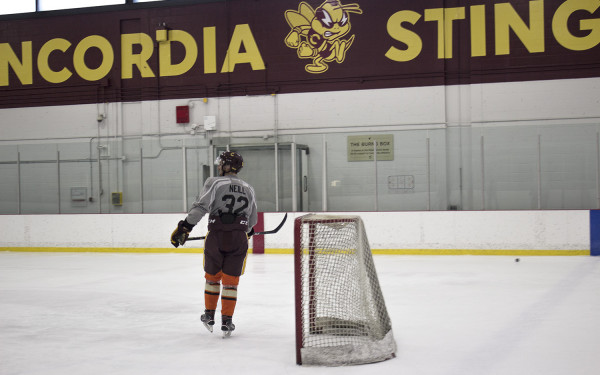Shut Up and Dribble: NHL player safety still not a priority
The same amount of games in a shorter timespan can only increase injury risk
With much uncertainty surrounding the sports world due to ongoing COVID-19 concerns, the NHL must strategize on how to go about next season as safely as possible.
The tentative plan is to condense the upcoming season, in hopes to reinstate the normal October-to-April schedule by 2021-2022.
According to TSN Insider Pierre Lebrun, a likely start to the 2020-2021 season could be as early as Jan. 1. Despite this delayed start, the league still intends to play a full 82 game season.
It would be hard to believe this decision was made on the basis of players health and safety, as a condensed 82 game format would only increase the risk of injury in an already high-risk contact sport.
Former Montreal Canadiens forward Tomas Plekanec agrees, and does not believe a full 82 game schedule, riddled with back-to-back contests, is the best option
“What’s happening in the world is just so crazy that who knows what’s the best way to approach this,” he said. “My opinion is a type of ‘lockout’ shortened season [...] and hopefully start the next upcoming season as everybody knows it October to April.”
Plekanec was a member of the Montreal Canadiens for over 950 games, and a prominent player in the NHL before leaving for the Czech Republic in 2019. The Kladno native only dressed for a full 82 game season three times in his pro career, which goes to show how hard it is to stay healthy in the NHL.
“I mean towards the end of my career, I could feel that each season was faster and faster,” he said. “Partly because I was older, partly because the league became younger.”
As players age and injuries begin to stack up, athletes are constantly looking for alternatives to stay in the lineup, healthy or not. Painkillers such as Turadol, as explained in TSN’s documentary The Problem of Pain, have been popularized in the NHL as a means to mask the pain.
Ryan Kesler, who played over 1000 games in the NHL, describes the physical pain he endures on a daily basis. The former Anaheim Duck has trouble even rolling out of bed some days, let alone trying to run around and raise his young children. There are devastating long term effects caused by injuries, especially repeated head trauma - players deal with body pains, headaches, nausea and reduced mobility.
Concussions and neck injuries are the most common injuries in the NHL, according to the Global News - they are also the most devastating long term. Retired players often experience depression and anxiety; mental ailments that often only surface after their playing career.
The documentary also exposes how team doctors have been known to downplay the severity of a player’s injury and clearing the athlete to play before they are ready. Many former NHL players, such as Kesler, have been outspoken about the importance of getting a second opinion outside of team doctors, for those exact reasons.
Dallas Stars forward Tyler Seguin played through the entirety of the 2020 postseason with wrist, hip, groin, and knee injuries, most notably a torn labrum in his hip that required surgery. He put his body on the line and forced himself to play despite a plethora of injuries.
Hockey culture has normalised pain and pain management, where players are taught to play through injury. The pressures of staying in the lineup often outweighs a player's need for medical attention. NHL clubs do what they can to keep their roster ‘healthy’.
According to a study done by Global News in 2014, NHL owners pay upwards of $218 million in player injury costs on a yearly basis—this includes physiotherapy, surgeries, and various rehabilitation measures. These costs would only increase as the rate of injury rises, which makes the 82 game format for 2020-2021 even less feasible financially.
Global News interviewed Toronto neurosurgeon and researcher Dr. Michael Cusimano, who thinks the NHL needs to do a better job of protecting its players. The NHL is in the entertainment business, and violence is a part of the show. Cusimano believes the NHL continues to neglect players’ health, and instead rush their injured athletes back into the lineup.
In 2013, a lawsuit was filed by former NHL players Joe Murphy and Bernie Nicholls, along with 135 other former NHL players. The players involved in the lawsuit believed the NHL glorified and profited off of violence, ignoring the long term repercussions of the constant brain trauma these athletes were undergoing during their professional careers.
Now what does all this mean for the upcoming season?
With the expectation of playing a full 82 game season in 2020-2021, they are risking a higher rate of injury in the league. With a rise in injuries, NHL clubs will have to spend more on both injury prevention measures and surgery/rehabilitation costs.
Numerous retired NHL players have been outspoken on their experience with the NHL, and how the league continues to make decisions that overlook its players safety and best interests. This potential decision to play a full 82 game season despite the current state of sports is just another poor decision.


_600_832_s.png)


web_600_375_90_s_c1.jpg)

